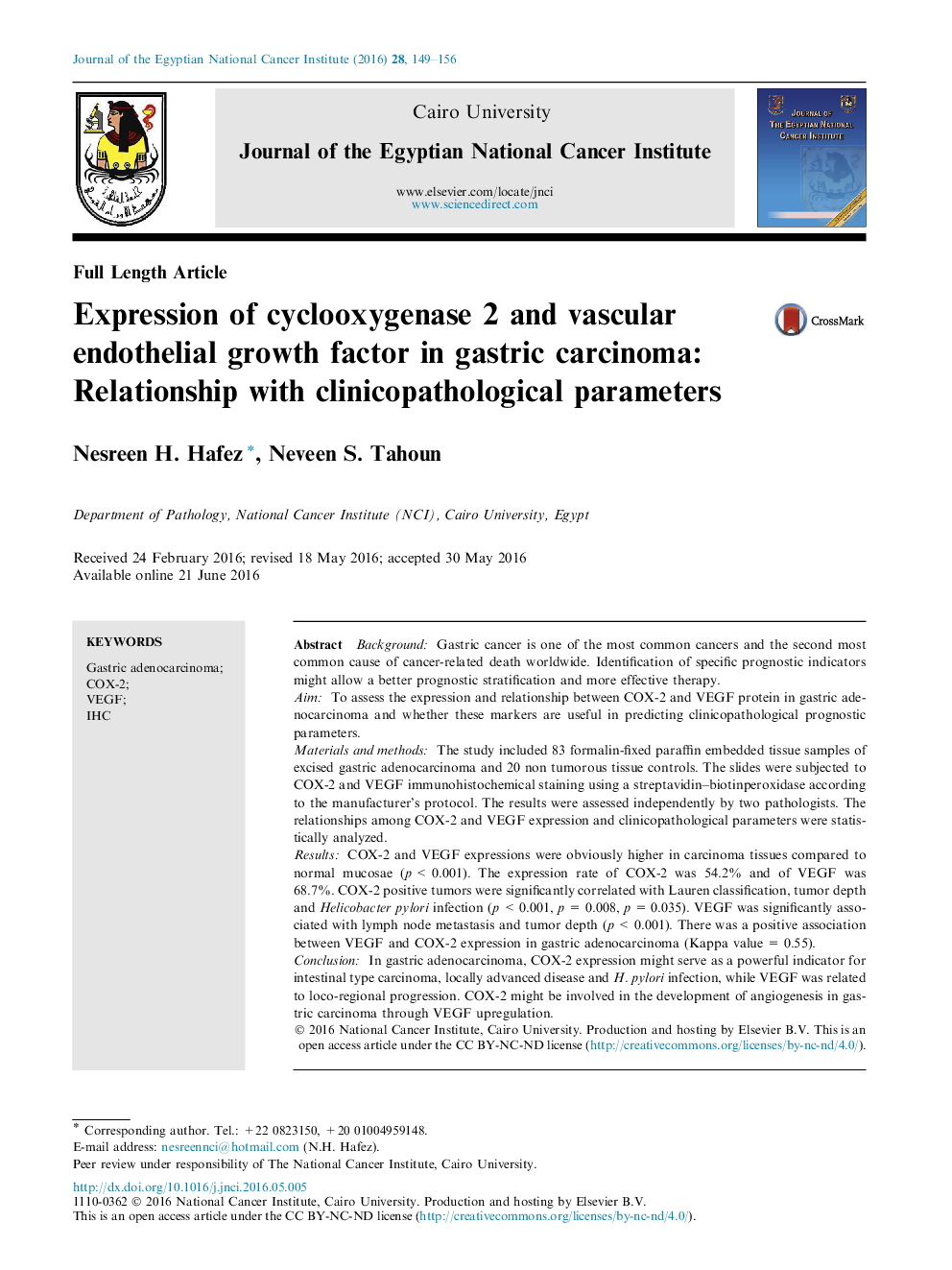| Article ID | Journal | Published Year | Pages | File Type |
|---|---|---|---|---|
| 3988874 | Journal of the Egyptian National Cancer Institute | 2016 | 8 Pages |
BackgroundGastric cancer is one of the most common cancers and the second most common cause of cancer-related death worldwide. Identification of specific prognostic indicators might allow a better prognostic stratification and more effective therapy.AimTo assess the expression and relationship between COX-2 and VEGF protein in gastric adenocarcinoma and whether these markers are useful in predicting clinicopathological prognostic parameters.Materials and methodsThe study included 83 formalin-fixed paraffin embedded tissue samples of excised gastric adenocarcinoma and 20 non tumorous tissue controls. The slides were subjected to COX-2 and VEGF immunohistochemical staining using a streptavidin–biotinperoxidase according to the manufacturer’s protocol. The results were assessed independently by two pathologists. The relationships among COX-2 and VEGF expression and clinicopathological parameters were statistically analyzed.ResultsCOX-2 and VEGF expressions were obviously higher in carcinoma tissues compared to normal mucosae (p < 0.001). The expression rate of COX-2 was 54.2% and of VEGF was 68.7%. COX-2 positive tumors were significantly correlated with Lauren classification, tumor depth and Helicobacter pylori infection (p < 0.001, p = 0.008, p = 0.035). VEGF was significantly associated with lymph node metastasis and tumor depth (p < 0.001). There was a positive association between VEGF and COX-2 expression in gastric adenocarcinoma (Kappa value = 0.55).ConclusionIn gastric adenocarcinoma, COX-2 expression might serve as a powerful indicator for intestinal type carcinoma, locally advanced disease and H. pylori infection, while VEGF was related to loco-regional progression. COX-2 might be involved in the development of angiogenesis in gastric carcinoma through VEGF upregulation.
